
The Robb Report Holiday Gift Guide
14 of the most exclusive and decadent gifts money can buy.
Related articles
Put something ultra-exclusive under the tree this year – from a supercar romp through France and Monaco, to an island takeover in Tanzania and the rarest of Japanese beef, we’ve got you covered.
1. Drive Every Supercar Imaginable Across Europe
As a car fan, if you’d asked your teenage self to describe his perfect adult holiday, it would undoubtedly have sounded like the brochure for one of the unfeasibly wondrous trips created and coordinated by the Australian-based company, Ultimate Driving Tours.
“So, I’d get all the supercars in the world – Ferraris, Lamborghinis, Aston Martins, Porsches, McLarens – probably a few of each, and then some of my best friends, and then we’d race them across the best roads in the world.”
Much as the teenager you were, or perhaps the teenager you might now have in your house, seems to be describing an impossible-dream scenario, all this can be yours thanks to the work of the Ultimate Driving Tours team.
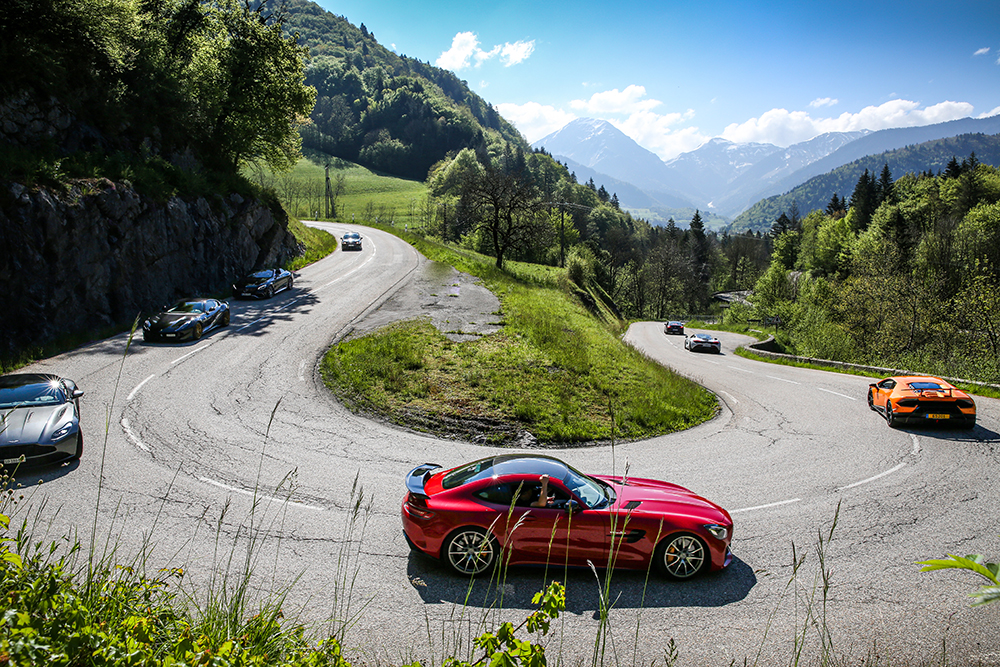
The company runs various supercar driving trips all over the world, but the jewel in the crown has to be the annual European Supercar Tour, which has been running for more than a decade and starts with three unforgettable days on a superyacht in Monaco, watching the world’s oldest, most storied and dangerous of Formula One races.
The unlimited food and drink on your enormous, triple-decker luxury cruiser is of the elevated quality you’ll come to expect across the coming week, as you slide into a selection of more than a dozen of the world’s fastest and, in some cases, least-obtainable cars for a cracking, high-speed blast across France, Italy and Switzerland, each night spent in the most impressive chateaux, eating at only the most exclusive restaurants.
There are options to extend your trip – with a tour of the champagne region – or yourself, with a one-day race-track session that ends behind the wheel of an F1 car.
In short, what Ultimate Driving Tours offers are once-in-a-lifetime experiences – dreams made real.
Robb Report readers are offered an accommodation / dining upgrade from Gold to Platinum, or an equivalent discount off the Platinum and Black packages. ultimatedrivingtours.com
2. Take over a Private island off Tanzania
Sometimes luxury means total seclusion. On the tiny private island of Thanda, off the coast of Tanzania in East Africa, the only sights and sounds are white sand, blue ocean and the clink of ice in your cocktail. Heavy waves are kept at bay by the surrounding coral reefs, while
noisy power boats are completely banned from the marine reserve that encircles the island.
The previously uninhabited 20-acre islet was acquired and transformed into a private resort by Swedish philanthropists Christin and Dan Olofsson, who run HIV-prevention programs in southern Africa. Nine guest suites and a spa look out over the Indian Ocean, and meals are served on the beach in local Swahili and Arabic style.
Activities on offer include sailing, snorkelling, diving, deep-sea fishing, kayaking, paddleboarding, tennis, yoga and a sunset cocktail cruise, while you can also swim with whale sharks and learn about Thanda’s conservation of sea turtles and dugongs with an in-house marine biologist.
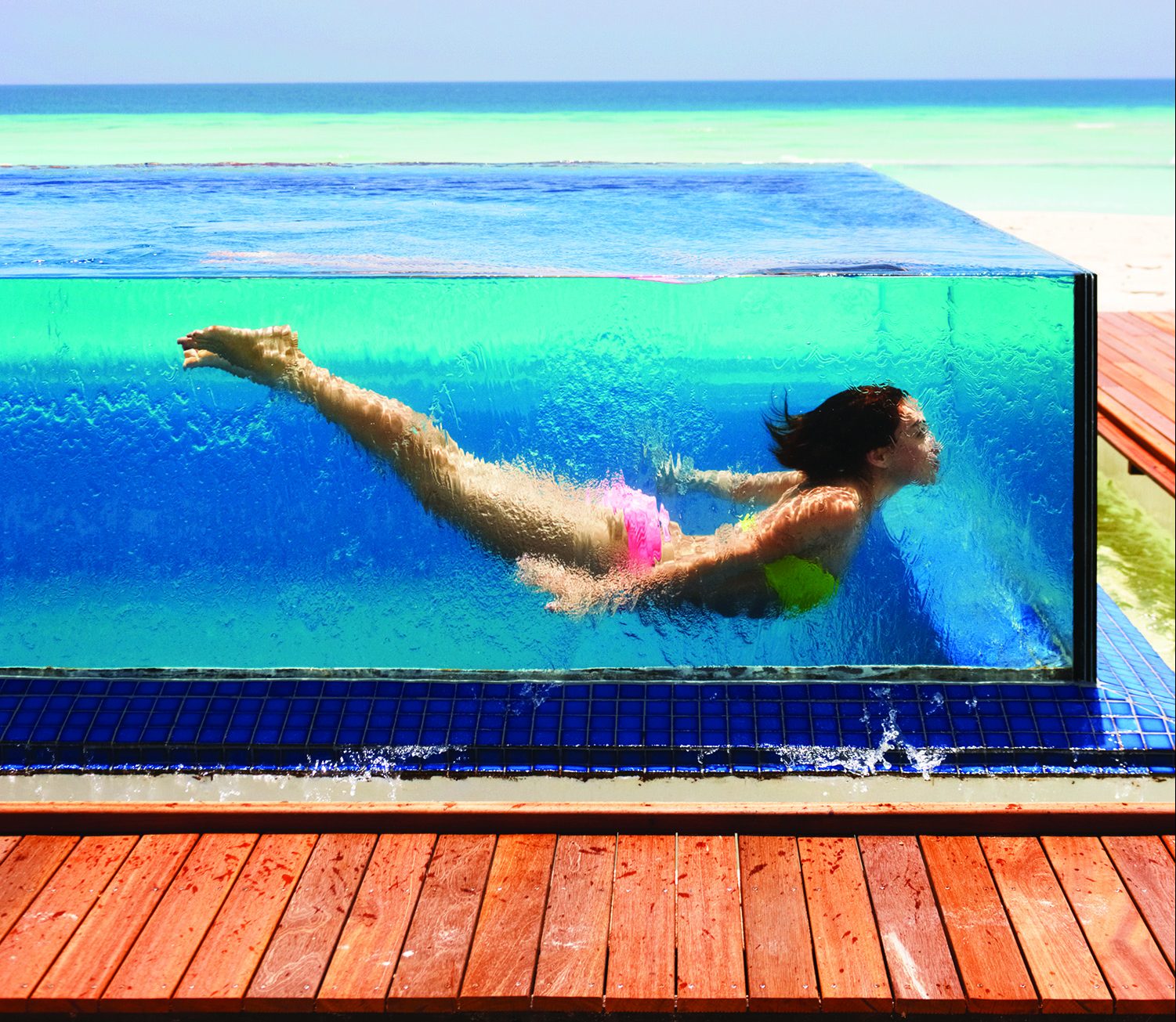
As a special experience for Robb Report readers, a five-night buyout of the entire island – up to 10 adults and nine children – will include a helicopter day trip for seven people to the neighbouring spice island of Zanzibar. Thanda’s chef will take you on a foodie mission to the markets of Stone Town and a nearby spice farm.
Back on Thanda, the chef will host a cooking class using the local catch of the day and your freshly bought coconuts, spices, vanilla pods and vegetables. – Lucy Alexander
Approx. $184,000, including activities, helicopter transfers from Dar es Salaam and food and drink. +27 32586 0149, reservations@thandaisland.com
3. Journey to the Japanese island with the most rarefied beef in the world
On the verdant Japanese island of Shodoshima, ranchers for centuries have raised some of the country’s finest cattle, and for the past hundred years, farmers have grown some of its best olives. But it wasn’t until 2006 that someone tried combining the two.
Rancher Masaki Ishii noticed that after the olives were pressed for oil, the leftover pulp was thrown out. He fed it to the cattle, making an already exceptional type of beef even better.
In one stroke, the umami flavour profile of the marbled fat was boosted even further by the use of the olives, says Joe Heitzeberg, owner of online steak purveyor Crowd Cow.
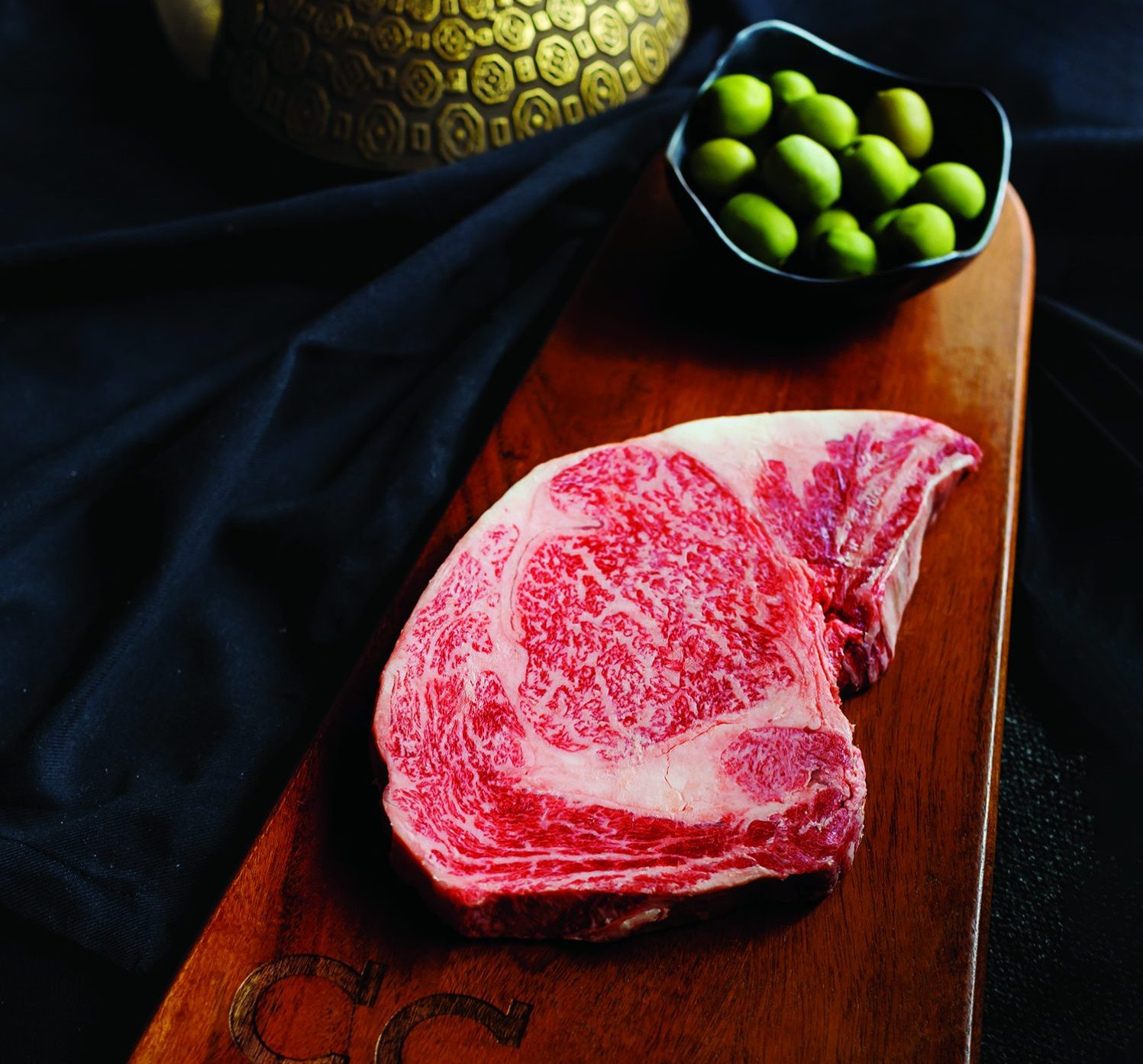
Many times, getting Olive Wagyu requires knowing someone who knows someone. Fortunately for you, Heitzeberg can be that guy. He’s inviting one Robb Report reader and a guest to join him as he guides you from Tokyo to Shodoshima and back.
Along the way you’ll meet the rancher who raises some of the world’s best beef and try the Olive Wagyu. Heitzeberg will get you access to a special private dinner at Ichigo steak house, and, back in Tokyo, a members-only restaurant for a sumptuous tasting menu. It’s a beef connoisseur’s dream. – J.R.
Approx $44,225, including meals, accommodation and travel in Japan. Round-trip airfare to Tokyo not included. crowdcow.com/olive-wagyu-experience
4. Take over a wellness retreat in China
Electrifying, frenetic Shanghai is not normally associated with relaxation. But weary travellers jaded by the bright lights of one of the world’s largest cities can now seek respite at Sangha Retreat, a new lakeside wellness resort an hour and a half’s drive west from The Bund.
Sangha occupies a 19-hectare peninsula on Yangcheng Lake, near the historic town of Suzhou, known as the Venice of the East owing to its ancient canals and bridges (it’s China, so there are skyscrapers too). The resort gives the waterside aesthetic a deeply contemporary spin: the design, by New York firm Tsao & McKown, has won numerous international awards.
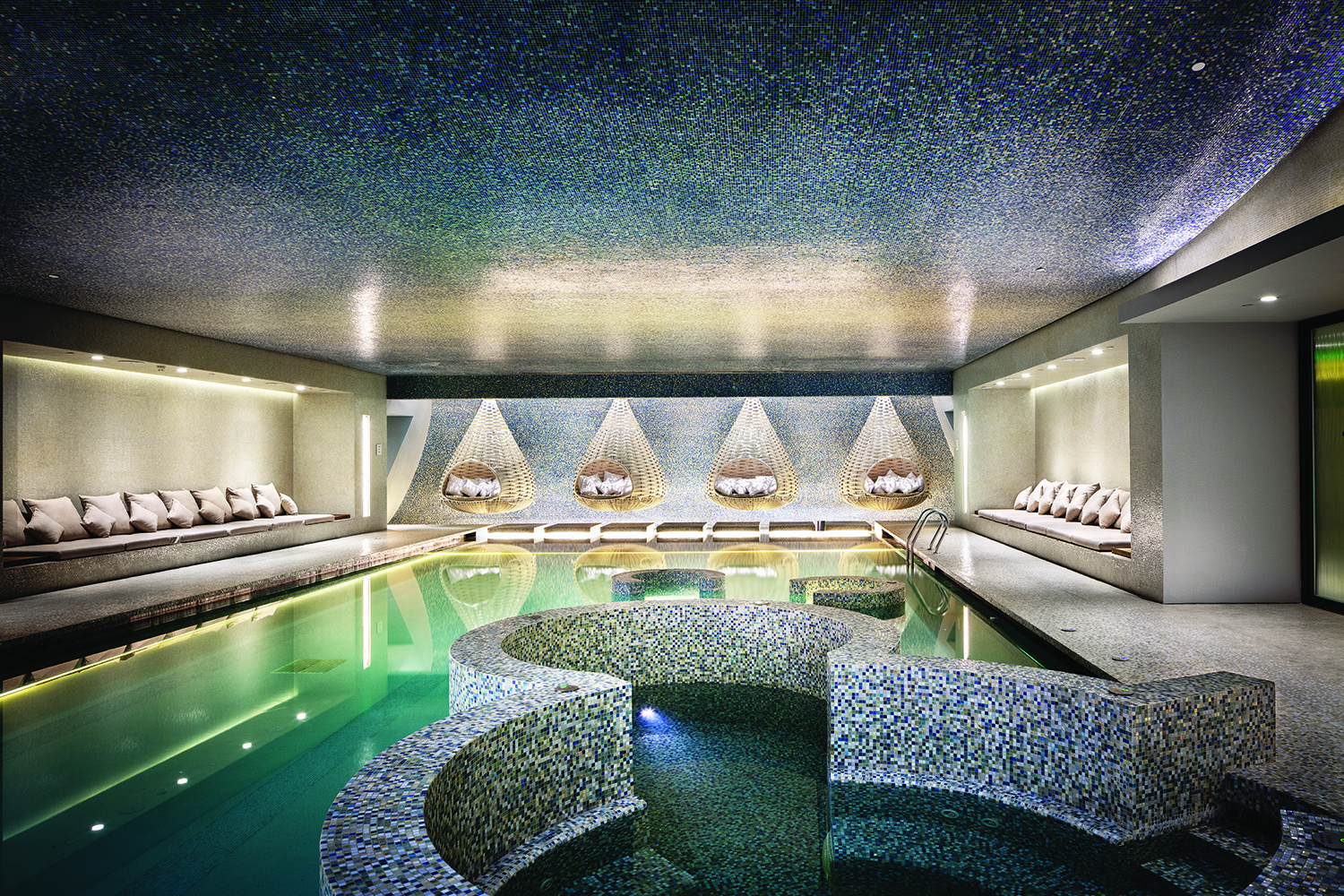
Sangha’s entire At One hotel is available for 66 people to buy out for a week’s immersive retreat, complete with spa, fitness centre and Michelin-starred cuisine. Unique to Robb Report readers is a bespoke wellness program that embraces Eastern and Western philosophies, led personally (schedule permitting) by Fred Tsao, Sangha’s founder. The retreat offers ancient Chinese practices, such as tai chi and meditation, and new traditions, like sailing across the lake to receive blessings from 300 Buddhist monks.
You can also add on three nights at the Four Seasons Shanghai Pudong, with evening entertainment in the French Concession area, a boat ride on the Huangpu River and more. – L.A.
Approx. $2.5 million for hotel buyout; and approx. $228,000 for Shanghai trip. Prices based on 66 people. Jamie Waring: jamiewaring@octave
institute.com. Martha Morningstar: +1 443 570 2252
5. Drive the perfect Porsche reimagined by Singer
We’ve taken the guesswork out of what to get your favourite car collector – with the help of Los Angeles–based Singer Vehicle Design. The boutique design-and-restoration house is offering one Robb Report reader the opportunity to own a Porsche 911 reimagined by Singer through the latest results of its Dynamics and Lightweighting Study (DLS), and to partake in exclusive driving experiences with the Singer team.
Singer founder Rob Dickinson has teamed with Robb Report on a unique interpretation of the German marque’s air-cooled 911 variant, the 964 (built from 1989 through 1994), one of only 75 examples to receive DLS services.
“The Dynamics and Lightweighting Study represents a pursuit of the most advanced air-cooled 911 in the world,” says Dickinson.
“In our 10th-anniversary year, I’m delighted that we’re able to offer one Robb Report enthusiast the opportunity to collaborate in reimagining their personal vision
for this iconic sports car.”
Developed from a customer-supplied donor car, the vehicle will comprise full carbon-fibre bodywork featuring visible carbon fibre for the exterior; a 500 hp, 4.0-litre, air-cooled flat-six engine mated to a six-speed gearbox with magnesium casing; and advanced aerodynamics that include an optimised rear ducktail and ram-air induction system.

As for the aniline-leather interior, think polished nickel for the trim, a titanium gear shifter and an 18-carat-gold tachometer, among other accents. Specifications will be further outlined during the recipient’s in-house consultation and dinner with Dickinson himself. (A number of bespoke special wishes can be accommodated at additional cost.)
Singer’s Robb Report present also includes a private track experience with its test driver Marino Franchitti, complete with a keepsake open-faced helmet and race suit, as well as VIP access to the always-hair-raising 2020 Goodwood Festival of Speed in West Sussex, England, in July. As a bonus, you’ll receive an invitation to ride shotgun with Singer during the event’s famed Hillclimb competition.
Did we mention the nearly six-figure Track 1 DLS Edition carbon-fibre chronograph? It will match the car and make the gift, you know, even more timely. – Viju Mathew
Starting at approx. $4.04 million, the gift offer expires February 15, 2020.
Deb Pollack: deb@singervehicledesign.com
6. Don an F. P. Journe Chronomètre Bleu and tour the manufacture
When F. P. Journe introduced the Chronomètre Bleu in 2009, it was considered the brand’s entry-level watch. Even so, Journe lived up to its reputation for discernment by refusing to use steel – instead using tantalum, a rare metal known for its blue-grey sheen and the headaches it gives watchmakers trying
to machine it.
Getting hold of one has also been known to cause headaches – it can take a personal connection at Journe,
a bit of vetting, and, well, time.
Allow Robb Report to ease that introduction: Journe is offering one reader a Chronomètre Bleu, along with a tour of the manufacture in Geneva, and a chance to meet the watchmaker who assembled the timepiece by hand. You’ll also meet the master himself, François-Paul Journe.
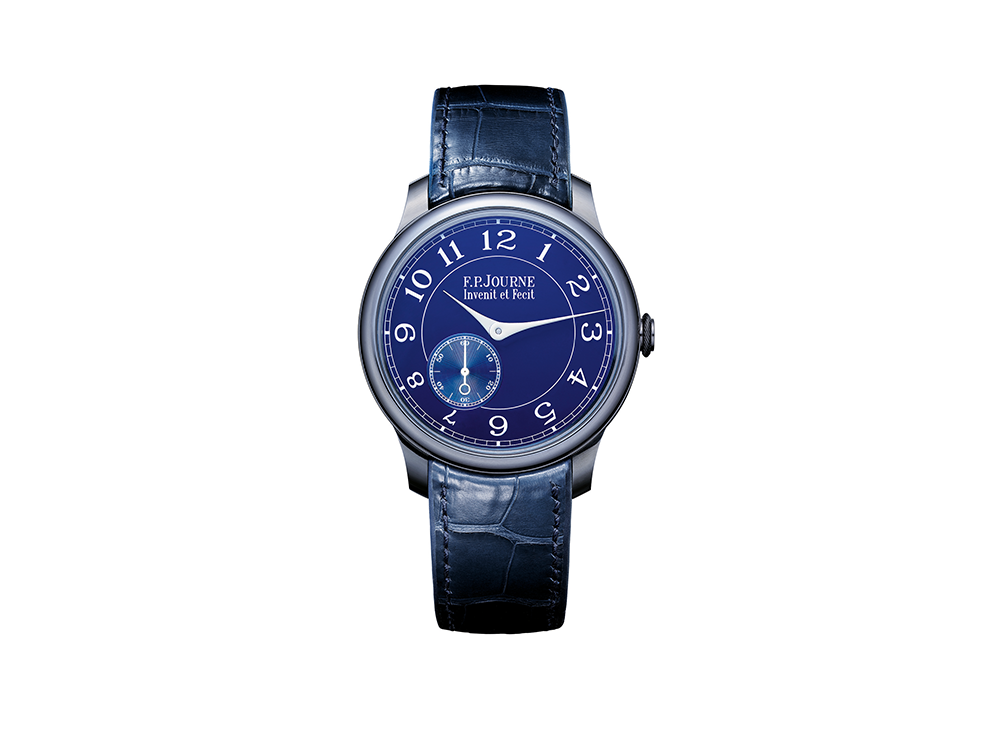
There could hardly be a better entrée to collecting in the big leagues: demand for the watch has been so strong the company no longer bothers to keep a waiting list. You should also know that great care was taken in creating the vivid blue dial, fashioned by applying layers of blue lacquer by hand and polishing each to a mirror finish. It’s said to be one of the most complicated dials to produce in
F. P. Journe’s collection.
The calibre 1304 movement is made of solid pink gold with a barleycorn guilloche pattern and, on the bridges, Geneva stripes and polished, bevelled angles. All further illustrating that, no matter the piece, F. P. Journe spares no detail. – Paige Reddinger
Approx $88,000 (with accommodation for two). paddle8.com/robbreport
7. Acquire sculpted bookends.
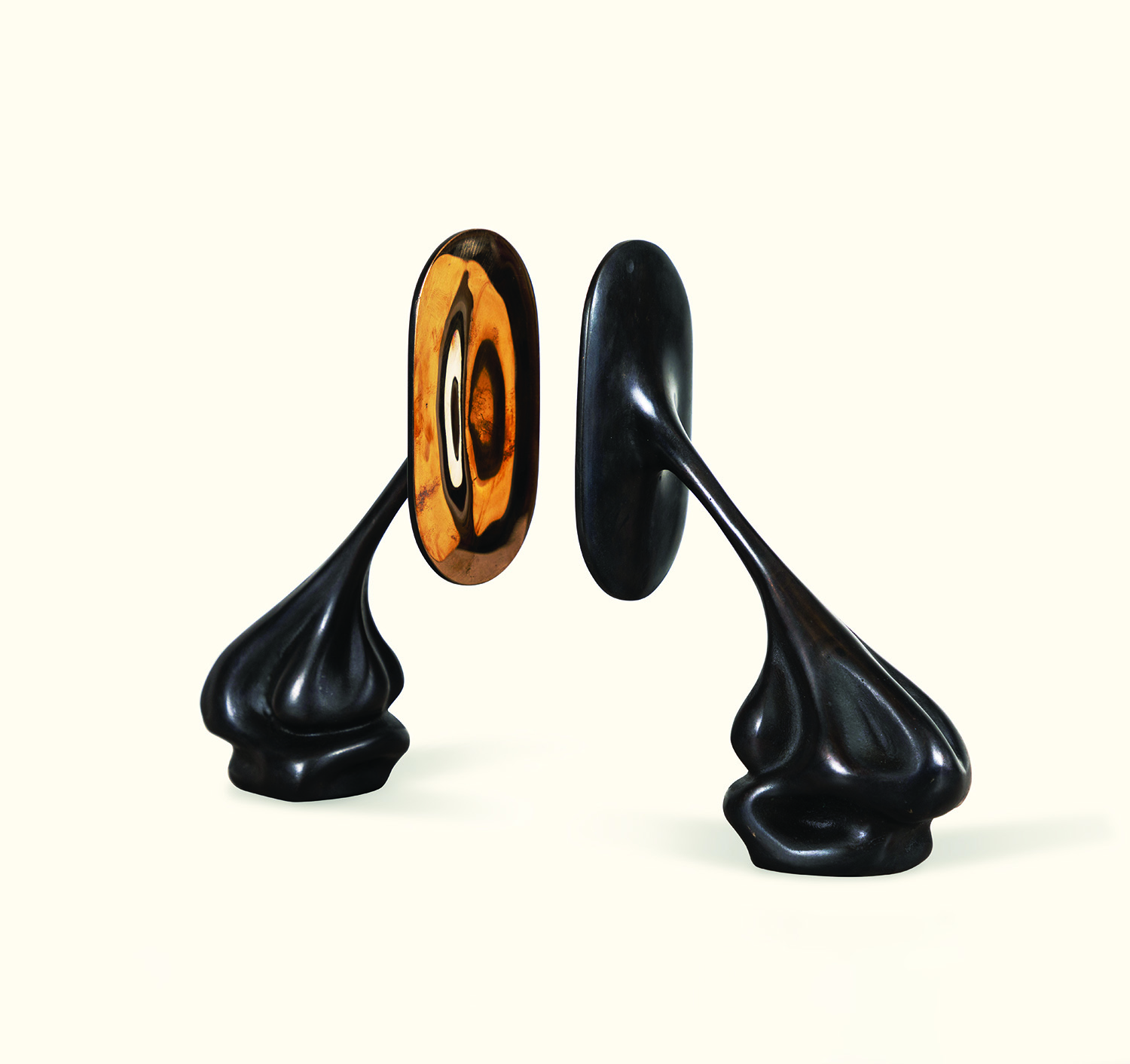
Yes, bookends can sometimes tell as compelling a story as the tomes they shelve; that’s designer Vincent Pocsik’s thinking, anyway. His sculptural stands chronicle a tale of fiery destruction, depicting the exact moment melting bronze solidifies once again. It’s par for the course for Pocsik, who has a history of twisting conventional materials into fluid shapes. Here, the aesthetic serves as a thrilling beginning and end to your library’s narrative. For Robb Report readers, Pocsik will also sign his molten creations. — H.M.
Approx. $1025. sarah@lawsonfenning.com
8. Take a helicopter tour of Tasmania
Australia’s smallest state and long overlooked as a sleepy backwater, Tasmania has become the country’s hottest under-the-radar destination for discerning visitors drawn to its foodie culture, contemporary art scene, world-class vineyards and breathtaking landscapes.
The island, compact in size with dramatic scenery, lends itself to helicopter tours. A bespoke trip created for Robb Report readers starts off with two nights in the penthouse at the Macq 01 Hotel in Hobart. From here, take a flight west along the spectacular coastline to the Southwest National Park. Watch out for rare parrots, and explore Aboriginal culture at remote Melaleuca, accessible only by air, boat or an eight-day walk.
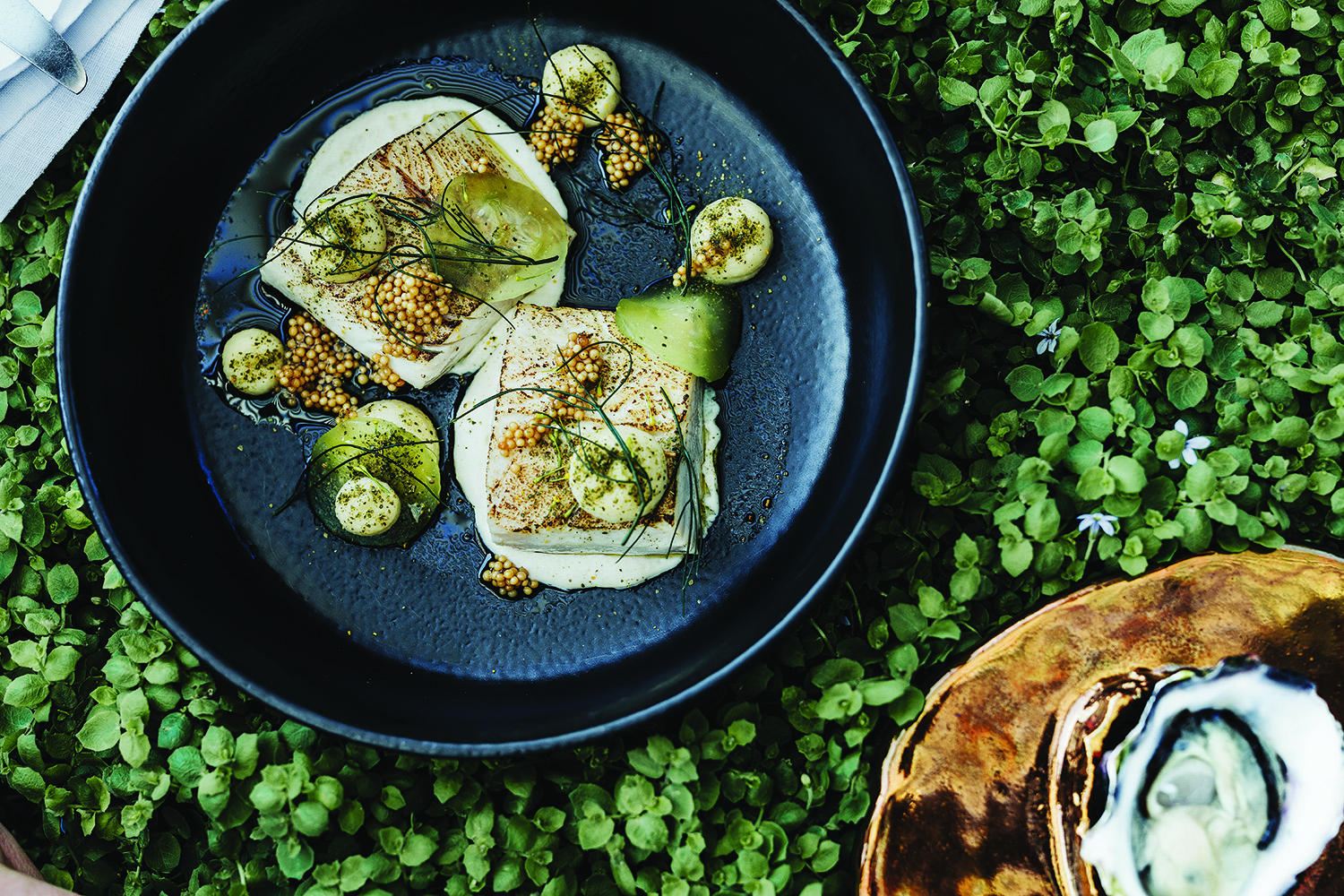
On the way home, stop off for a tour of the Fat Pig Farm in the Huon Valley, as well as a private lunch straight from the garden, with specially matched Tasmanian beer, wine and cider.
The following day, take a helicopter to the Barilla Bay Oyster Farm to taste oysters plucked straight from the sea, accompanied by a glass of Tasmania’s finest sparkling wine.
Next, on to the Southern Wild Distillery on the island’s north coast, home to some of the country’s best gin. Enjoy a private lunch with the owner and have a bottle of gin made according to your taste. After lunch, see wombats and kangaroos in the wild on Maria Island. Spend the next two nights at Saffire, a small, exclusive resort within Freycinet National Park.
No trip to Tassie is complete without a visit to the largest private museum in Australia: MONA, the Museum of Old and New Art. Take a private tour before you leave Hobart. – L.A.
From about $15,000 per couple.
Greg Ross: gkross@tasairtours.com.au, 0428 252 081
9. Help reforest Guatemala
Gifts can take many forms, and volunteering your time on a fulfilling project is one of the most rewarding. Especially when it’s combined with a fabulous adventure vacation.
Guatemala is famous for its natural beauty, but its fast-growing population has led to deforestation as ancient jungle is cleared to make way for farmland.
Global Visionaries is a non-profit that promotes reforestation in Guatemala – and luxury travel agency Scott Dunn is inviting Robb Report readers to spend two days restocking woodlands, working alongside local communities during planting season (May to October), and reforesting land to reduce the risk of forest fires and ensure new trees are in the best condition to survive.
You’ll be based for three nights at the boutique San Rafael Hotel in the city of Antigua, filled with crumbling Spanish Baroque churches and set against a backdrop of volcanoes. After your reforestation experience, take a helicopter tour of Chichicastenango market before moving on to Lake Atitlán, where you’ll stay at bright hotel Casa Palopó. Finally, you’ll head into the jungle to see the Mayan ruins of Tikal, with the chance to watch the sunrise from a temple-top before enjoying a private tour of the ruins.
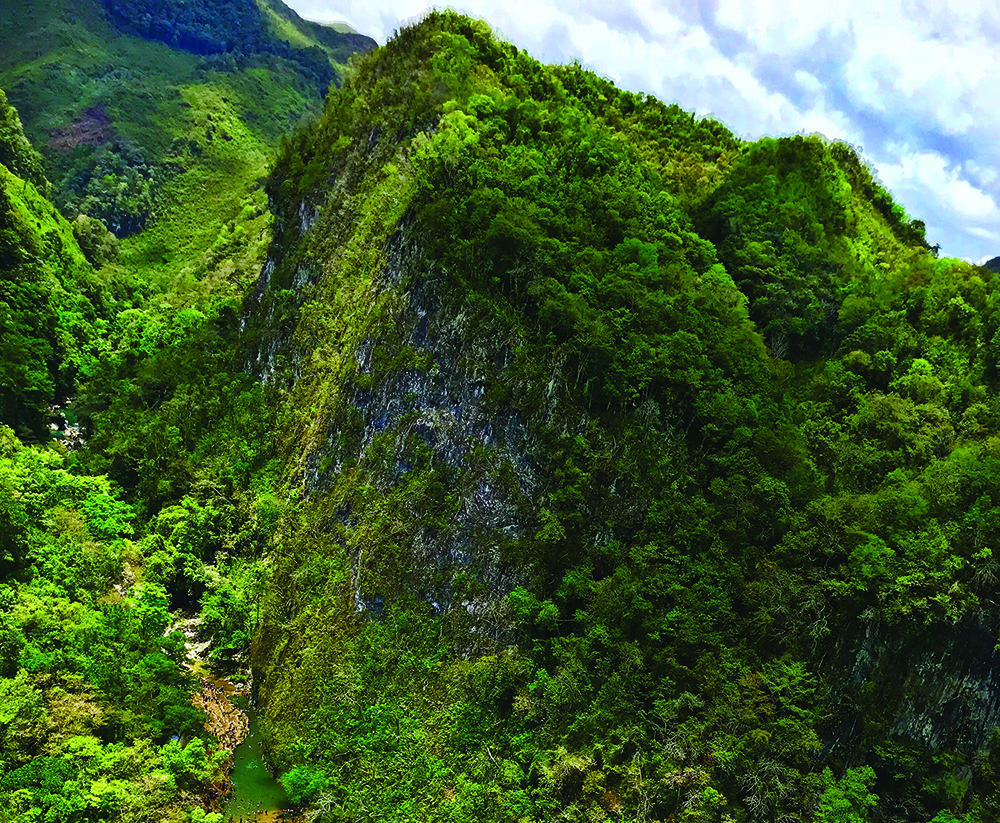
After two nights, you’ll cross into Belize to stay at Blancaneaux Lodge, and the chance for horseback treks through the forest. A final helicopter and boat trip will take you to Cayo Espanto, an ultra-luxury Caribbean island with just seven cabanas. For four days, enjoy world-class scuba diving and sail to nearby deserted beaches for dinner on the sand. – L.A.
Approx. $18,400 per person, based on double occupancy, for a two-week trip that includes accommodation and breakfast, plus full board and most activities at Cayo Espanto, and all tours and transfers. Return airfare to Guatemala not included. Scott Dunn: 02 8608 8621.
10. Join a round-the-world performing arts tour on VistaJet
For dedicated opera and ballet lovers, long-haul travel to the world’s best concert halls can sap a little joy from what should be a sublime experience, even when flying by private jet. But what if you could enjoy a private performance on the flight itself?
In an exclusive gift for Robb Report readers, VistaJet will fly you to the world’s finest opera houses and music venues, with a few actors on board
to perform your favourite scenes above the clouds.
VistaJet will help you design your ideal itinerary, which could see you experience the extraordinary Bolshoi Ballet in Moscow; or, in Vienna, choose from the world’s largest repertoire at the Wiener Staatsoper, which has featured productions by all the greats, from Verdi to Puccini.
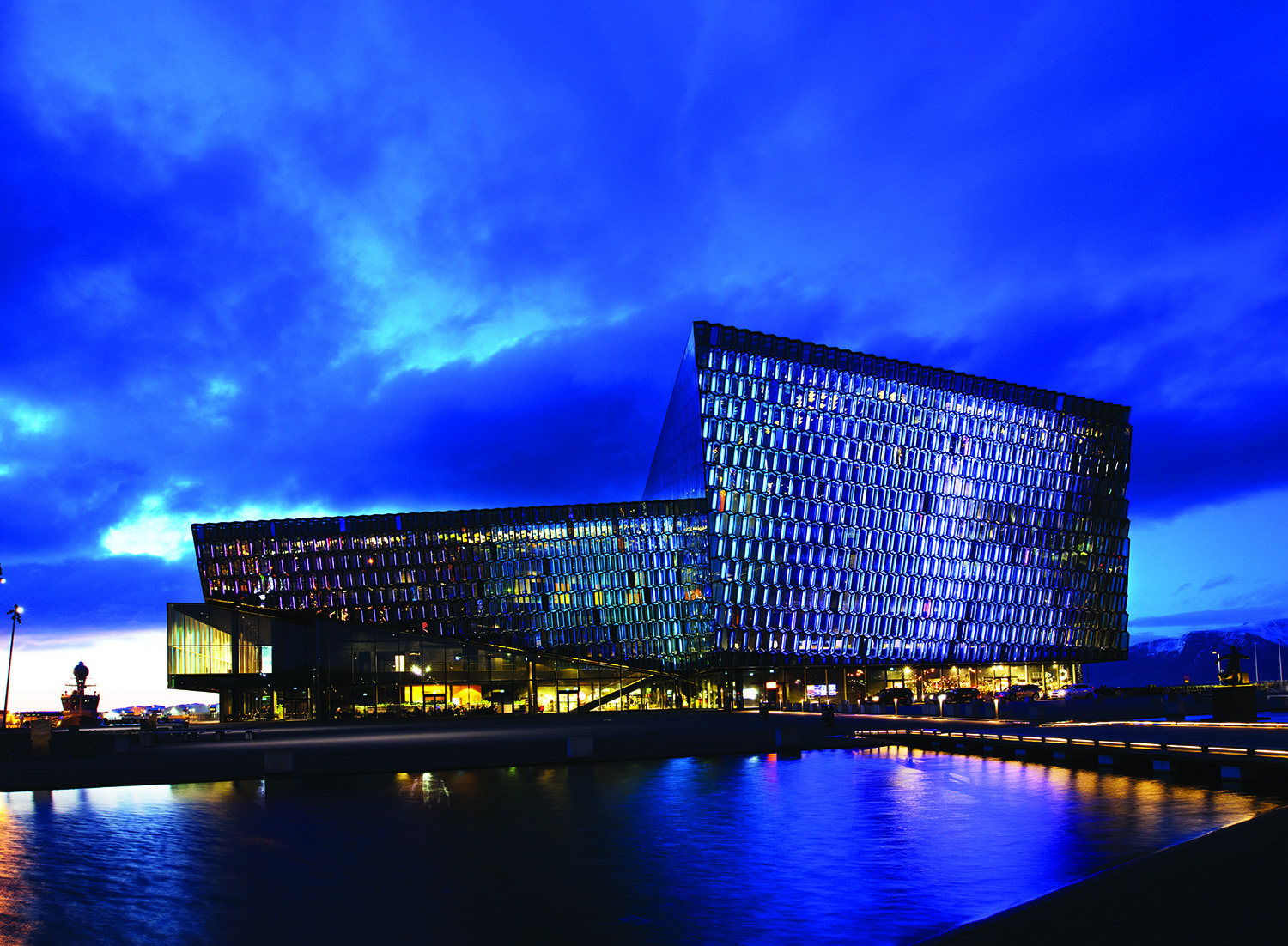
Other venues include London’s Royal Albert Hall, Frank Gehry’s Walt Disney Concert Hall in LA, the Tokyo Opera City Concert Hall and Harpa in Reykjavik, one of Iceland’s most distinguished
modern landmarks.
At each location, watch from a private box, enjoy backstage access, meet cast members and stay at the city’s best hotels. – L.A.
From approx. $383,000 for two people, increasing up to a maximum of 10. Theatre seating contingent on availability. Book through VistaJet’s Private Office: privateoffice@vistajet.com
11. Commission a custom cocktail cabinet
For the fine-drinks lover it really doesn’t get more sophisticated than a bespoke Zelouf & Bell cabinet, designed by Susan Zelouf and Michael Bell. The pair’s process usually involves a visit to the client’s house to look at the artwork and books, learn about his or her interests and study the all-important spirits collection, before creating a mood board for the unique piece and crafting it in Ireland.
They have commissioned glass artists to create custom barware for their cabinets and used materials ranging from shagreen and rose quartz to amethyst and malachite. One recent brief was inspired by the client’s favourite Fabergé cigar case – the result was a cocktail cabinet crafted in a silvery-blue rippled sycamore.

If spirits aren’t your thing, Zelouf & Bell have made cabinets for collections of everything from Hermès Gavroche scarves to toy soldiers. They’ve also created pieces for musician Paul Simon and ambassadorial residences.
Just remember, patience is a virtue: pieces can take up to 24 weeks to complete. – Jemima Sissons
Approx. $37,000. zeloufandbell.com
12. Visit Penfolds’ vineyard and dine with Peter Gago
Make a pilgrimage to Australia’s most lauded vineyard, Penfolds, led by one of the world’s top winemakers, the affable Peter Gago. Penfolds is inviting one Robb Report reader and three guests on a special visit.
Fly from Penfolds Magill Estate via luxury helicopter to the Barossa Valley where you’ll soar over the region with a guide. Afterwards you and a winemaker will walk Block 42, the oldest still-producing Cabernet Sauvignon vines in Australia. Then you’ll have lunch at the Kalimna Homestead, where you’ll meet Gago for a tour of the cellars and a flight of rare Penfolds wines.
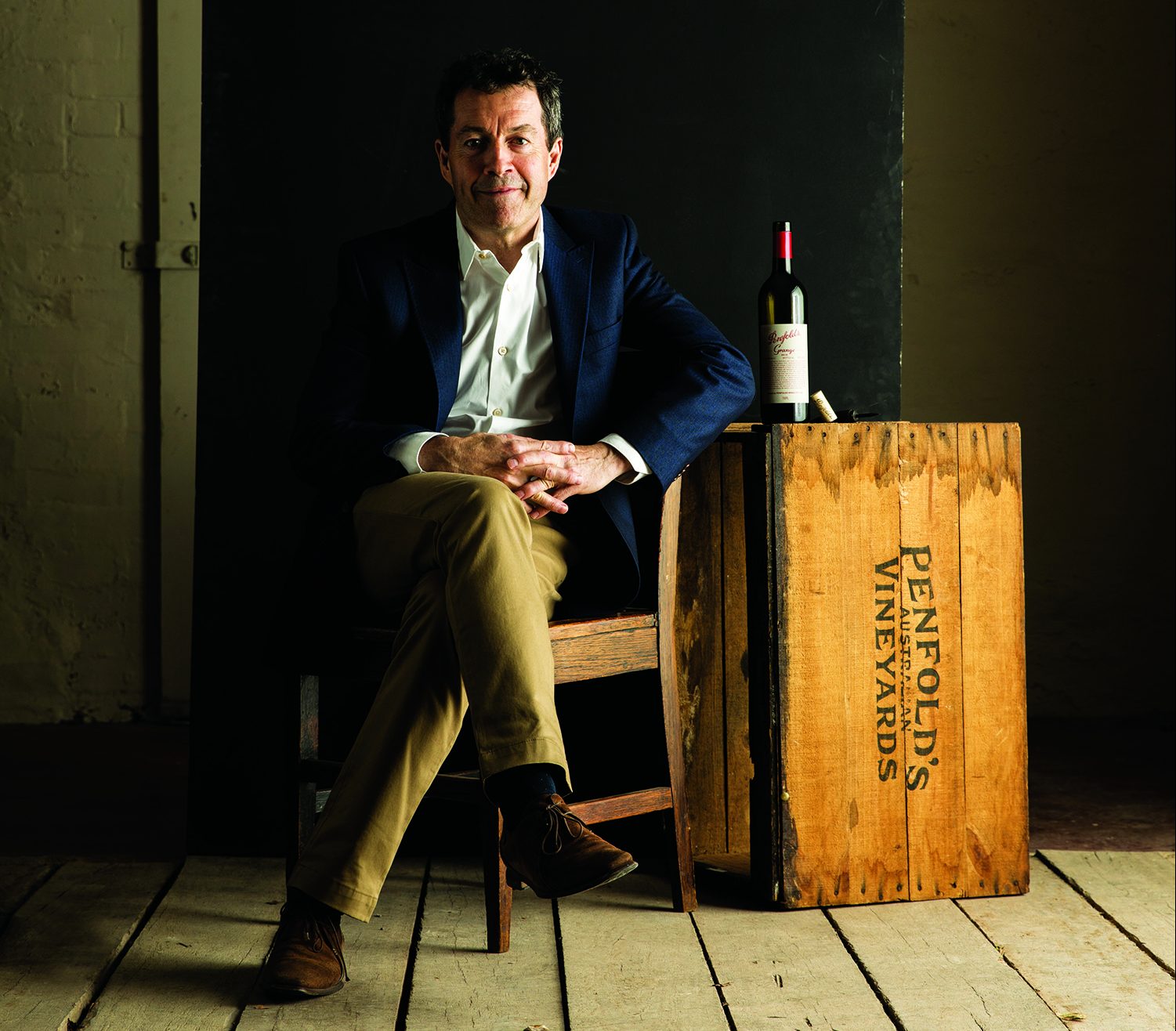
Later, over a dinner hosted by Gago at the award-winning Magill Estate Restaurant, taste rare vintages of Grange. You’ll leave with a parting gift of a magnum of the estate’s 100-point-winning 2015 Grange. – J.O.
Approx $73,650. Accommodation, if desired, can be arranged for additional cost. Contact renee.jeffrey@tweglobal.com
13. Take over a villa on Lake Como
“This lake exceeds anything I ever beheld in beauty… But the finest scenery is that of the Villa Pliniana,” wrote Percy Bysshe Shelley to his friend and fellow poet Thomas Love Peacock during a tour of Italy in 1818.
The Pliniana remains one of Lake Como’s most storied, beguiling and beautiful waterside villas, today run by the nearby Il Sereno luxury hotel, which is as contemporary as Villa Pliniana is historic.
Named after Pliny the Younger, the Roman writer and senator of the first century AD, who grew up on the shores of the lake, Villa Pliniana was built in 1573. By the time Shelley tried to rent it nearly 250 years later, it had fallen into disrepair.
“The scene from the colonnade is the most extraordinary, at once, and the most lovely that eye ever beheld,” he wrote, adding that he was “endeavouring to procure” the house, “which was once a magnificent palace and is now half in ruins.”
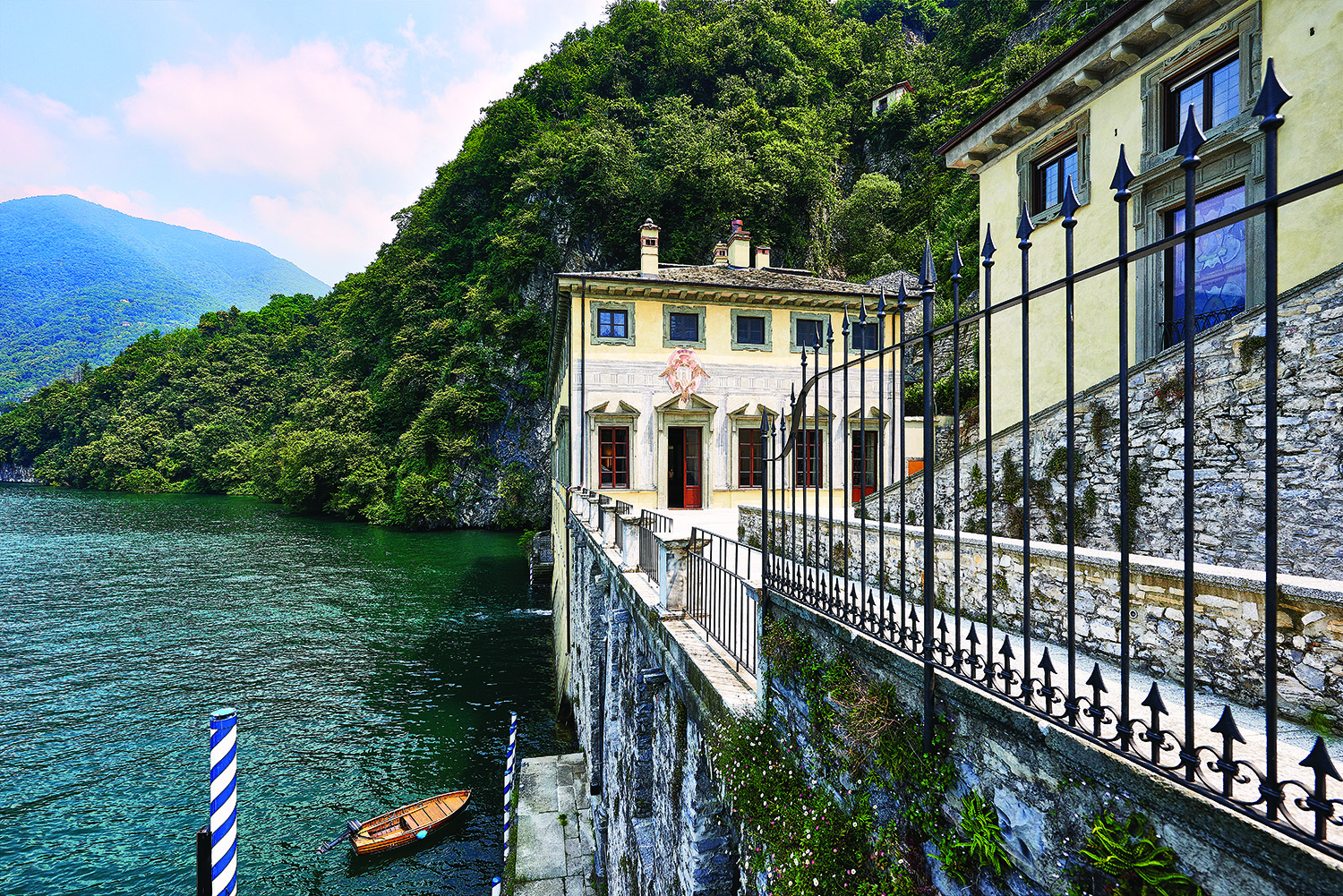
Today, the villa is fully refurbished as a luxury residence, with 17 bedrooms and interiors by acclaimed designer Patricia Urquiola. It is set in a 7-hectare park, and all guest suites overlook the lake, as do the spa and infinity pool.
Shelley may have failed to “procure” the villa, but Robb Report readers can rent out the entire complex for up to 34 guests, arriving via private helipad or boat dock. Il Sereno’s executive chef, Raffaele Lenzi, will conduct private cooking classes, demonstrating the techniques, presentation and recipes that he has honed working in Michelin-starred kitchens. – L.A.
Approx. $210,000 per week for full buyout, including daily breakfast. Cooking classes from approx. $1,000 per person. Marta Camps, Sereno Hotels: sales@serenohotels.com,
+39 031 5477 800
14. Slip on a unique Van Cleef & Arpels Secret Watch and tour the atelier
Secret watches – jewelled bracelets that conceal watches – were created so a woman could discreetly check the time without appearing rude. Today, the approach is more over-the-top than under-the-radar. Case in point: Van Cleef & Arpels’s new piece from its inaugural Romeo & Juliet collection, which comes adorned with diamonds, rubies, onyx, sapphires and more.
There are four artist tableaux inside the bracelet: two hearts encrusted in sapphires and rubies, and two profiles of Romeo and Juliet in lapis lazuli, all set in onyx and revealed by activating a pusher on the side.

The client who purchases the piece can choose to have his or her profile, along with a partner’s, customised on the interior. In addition, for the Robb Report reader who acquires the watch, Van Cleef & Arpels will provide a rare tour of its atelier in Paris – another secretive space that’s certainly something to brag about. – P.R.
Approx $2.4 million. vancleefarpels.com
Subscribe to the Newsletter
Recommended for you
5 Lounge Chairs That Add Chic Seating to Your Space
Daybeds, the most relaxed of seating solutions, offer a surprising amount of utility.
July 22, 2024
Living La Vida Lagerfeld
The world remembers him for fashion. But as a new tome reveals, the iconoclastic designer is defined as much by extravagant, often fantastical, homes as he is clothes.
July 22, 2024
You may also like.
By Josh Bozin
24/07/2024
You may also like.
5 Lounge Chairs That Add Chic Seating to Your Space
Daybeds, the most relaxed of seating solutions, offer a surprising amount of utility.
Chaise longue, daybed, recamier, duchesse brisée—elongated furniture designed for relaxing has a roster of fancy names. While the French royal court of Louis XIV brought such pieces to prominence in fashionable European homes, the general idea has been around far longer: The Egyptian pharaohs were big fans, while daybeds from China’s Ming dynasty spurred all those Hollywood Regency fretwork pieces that still populate Palm Beach living rooms. Even Mies van der Rohe, one of design’s modernist icons, got into the lounge game with his Barcelona couch, a study of line and form that holds up today.
But don’t get caught up in who invented them, or what to call them. Instead, consider their versatility: Backless models are ideal in front of large expanses of glass (imagine lazing on one with an ocean view) or at the foot of a bed, while more structured pieces can transform any corner into a cozy reading nook. Daybeds may be inextricably linked to relaxation, but from a design perspective, they put in serious work.

Emmy, Egg Collective
In designing the Emmy chaise, the Egg Collective trio of Stephanie Beamer, Crystal Ellis and Hillary Petrie, who met as students at Washington University in St. Louis, aimed for versatility. Indeed, the tailored chaise looks equally at home in a glass skyscraper as it does in a turn-of-the-century town house. Combining the elegance of a smooth, solid oak or walnut frame with the comfort of bolsters and cushioned upholstery or leather, it works just as well against a wall or at the heart of a room. From around $7,015; Eggcollective.com
 Plum, Michael Robbins
Plum, Michael Robbins
Woodworker Michael Robbins is the quintessential artisan from New York State’s Hudson Valley in that both his materials and methods pay homage to the area. In fact, he describes his style as “honest, playful, elegant and reflective of the aesthetic of the Hudson Valley surroundings”. Robbins crafts his furniture by hand but allows the wood he uses to help guide the look of a piece. (The studio offers eight standard finishes.) The Plum daybed, brought to life at Robbins’s workshop, exhibits his signature modern rusticity injected with a hint of whimsy thanks to the simplicity of its geometric forms. Around $4,275; MichaelRobbins.com

Kimani, Reda Amalou Design
French architect and designer Reda Amalou acknowledges the challenge of creating standout seating given the number of iconic 20th-century examples already in existence. Still, he persists—and prevails. The Kimani, a bent slash of a daybed in a limited edition of eight pieces, makes a forceful statement. Its leather cushion features a rolled headrest and rhythmic channel stitching reminiscent of that found on the seats of ’70s cars; visually, these elements anchor the slender silhouette atop a patinated bronze base with a sure-handed single line. The result: a seamless contour for the body. Around $33,530; RedaAmalou
Dune, Workshop/APD
From a firm known for crafting subtle but luxurious architecture and interiors, Workshop/APD’s debut furniture collection is on point. Among its offerings is the leather-wrapped Dune daybed. With classical and Art Deco influences, its cylindrical bolsters are a tactile celebration, and the peek of the curved satin-brass base makes for a sensual surprise. Associate principal Andrew Kline notes that the daybed adeptly bridges two seating areas in a roomy living space or can sit, bench-style, at the foot of a bed. From $13,040; Workshop/ APD
Sherazade, Edra
Designed by Francesco Binfaré, this sculptural, minimalist daybed—inspired by the rugs used by Eastern civilizations—allows for complete relaxation. Strength combined with comfort is the name of the game here. The Sherazade’s structure is made from light but sturdy honeycomb wood, while next-gen Gellyfoam and synthetic wadding aid repose. True to Edra’s amorphous design codes, it can switch configurations depending on the user’s mood or needs; for example, the accompanying extra pillows—one rectangular and one cylinder shaped— interchange to become armrests or backrests. From $32,900; Edra
You may also like.
By Josh Bozin
24/07/2024
22/07/2024
Watches & Wonders 2024 Showcase: Hermès
We head to Geneva for the Watches & Wonders exhibition; a week-long horological blockbuster featuring the hottest new drops, and no shortage of hype.
With Watches & Wonders 2024 well and truly behind us, we review some of the novelties Hermès presented at this year’s event.
—
HERMÈS

Moving away from the block colours and sporty aesthetic that has defined Hermès watches in recent years, the biggest news from the French luxury goods company at Watches & Wonders came with the unveiling of its newest collection, the Hermès Cut.
It flaunts a round bezel, but the case middle is nearer to a tonneau shape—a relatively simple design that, despite attracting flak from some watch aficionados, works. While marketed as a “women’s watch”, the Cut has universal appeal thanks to its elegant package and proportions. It moves away from the Maison’s penchant for a style-first product; it’s a watch that tells the time, not a fashion accessory with the ability to tell the time.
Hermès gets the proportions just right thanks to a satin-brushed and polished 36 mm case, PVD-treated Arabic numerals, and clean-cut edges that further accentuate its character. One of the key design elements is the positioning of the crown, boldly sitting at half-past one and embellished with a lacquered or engraved “H”, clearly stamping its originality. The watch is powered by a Hermès Manufacture movement H1912, revealed through its sapphire crystal caseback. In addition to its seamlessly integrated and easy-wearing metal bracelet, the Cut also comes with the option for a range of coloured rubber straps. Together with its clever interchangeable system, it’s a cinch to swap out its look.
It will be interesting to see how the Hermès Cut fares in coming months, particularly as it tries to establish its own identity separate from the more aggressive, but widely popular, Ho8 collection. Either way, the company is now a serious part of the dialogue around the concept of time.
—
Read more about this year’s Watches & Wonders exhibition at robbreport.com.au
You may also like.
22/07/2024
Living La Vida Lagerfeld
The world remembers him for fashion. But as a new tome reveals, the iconoclastic designer is defined as much by extravagant, often fantastical, homes as he is clothes.
“Lives, like novels, are made up of chapters”, the world-renowned bibliophile, Karl Lagerfeld, once observed.
Were a psychological-style novel ever to be written about Karl Lagerfeld’s life, it would no doubt give less narrative weight to the story of his reinvigoration of staid fashion houses like Chloe, Fendi and Chanel than to the underpinning leitmotif of the designer’s constant reinvention of himself.
In a lifetime spanning two centuries, Lagerfeld made and dropped an ever-changing parade of close friends, muses, collaborators and ambiguous lovers, as easily as he changed his clothes, his furniture… even his body. Each chapter of this book would be set against the backdrop of one of his series of apartments, houses and villas, whose often wildly divergent but always ultra-luxurious décor reflected the ever-evolving personas of this compulsively public but ultimately enigmatic man.
With the publication of Karl Lagerfeld: A Life in Houses these wildly disparate but always exquisite interiors are presented for the first time together as a chronological body of work. The book indeed serves as a kind of visual novel, documenting the domestic dreamscapes in which the iconic designer played out his many lives, while also making a strong case that Lagerfeld’s impact on contemporary interior design is just as important, if not more so, than his influence on fashion.

In fact, when the first Lagerfeld interior was featured in a 1968 spread for L’OEil magazine, the editorial describes him merely as a “stylist”. The photographs of the apartment in an 18th-century mansion on rue de Université, show walls lined with plum-coloured rice paper, or lacquered deepest chocolate brown in sharp contrast to crisp, white low ceilings that accentuated the horizontality that was fashionable among the extremely fashionable at the time. Yet amid this setting of aggressively au courant modernism, the anachronistic pops of Art Nouveau and Art Deco objects foreshadow the young Karl’s innate gift for creating strikingly original environments whose harmony is achieved through the deft interplay of contrasting styles and contexts.
Lagerfeld learned early on that presenting himself in a succession of gem-like domestic settings was good for crafting his image. But Lagerfeld’s houses not only provided him with publicity, they also gave him an excuse to indulge in his greatest passion. Shopping!
By 1973, Lagerfeld was living in a new apartment at Place Saint–Sulpice where his acquisition of important Art Deco treasures continued unabated. Now a bearded and muscular disco dandy, he could most often be found in the louche company of the models, starlets and assorted hedonistic beauties that gathered around the flamboyant fashion illustrator Antonio Lopez. Lagerfeld was also in the throes of a hopeless love affair with Jacques de Bascher whose favours he reluctantly shared with his nemesis Yves Saint Laurent.

He painted the rooms milky white and lined them with specially commissioned carpets—the tawny patterned striations of which invoked musky wild animal pelts. These lent a stark relief to the sleek, machine-age chrome lines of his Deco furnishings. To contemporary eyes it remains a strikingly original arrangement that subtly conveys the tensions at play in Lagerfeld’s own life: the cocaine fuelled orgies of his lover and friends, hosted in the pristine home of a man who claimed that “a bed is for one person”.
In 1975, a painful falling out with his beloved Jacques, who was descending into the abyss of addiction, saw almost his entire collection of peerless Art Deco furniture, paintings and objects put under the auctioneer’s hammer. This was the first of many auction sales, as he habitually shed the contents of his houses along with whatever incarnation of himself had lived there. Lagerfeld was dispassionate about parting with these precious goods. “It’s collecting that’s fun, not owning,” he said. And the reality for a collector on such a Renaissance scale, is that to continue buying, Lagerfeld had to sell.
Of all his residences, it was the 1977 purchase of Hôtel Pozzo di Borgo, a grand and beautifully preserved 18th-century house, that would finally allow him to fulfill his childhood fantasies of life in the court of Madame de Pompadour. And it was in this aura of Rococó splendour that the fashion designer began to affect, along with his tailored three-piece suits, a courtier’s ponytailed and powdered coif and a coquettish antique fan: marking the beginning of his transformation into a living, breathing global brand that even those with little interest in fashion would immediately recognise.

Lagerfeld’s increasing fame and financial success allowed him to indulge in an unprecedented spending frenzy, competing with deep-pocketed institutions like the Louvre to acquire the finest, most pedigreed pearls of the era—voluptuously carved and gilded bergères; ormolu chests; and fleshy, pastel-tinged Fragonard idylls—to adorn his urban palace. His one-time friend André Leon Talley described him in a contemporary article as suffering from “Versailles complex”.
However, in mid-1981, and in response to the election of left-wing president, François Mitterrand, Lagerfeld, with the assistance of his close friend Princess Caroline, became a resident of the tax haven of Monaco. He purchased two apartments on the 21st floor of Le Roccabella, a luxury residential block designed by Gio Ponti. One, in which he kept Jacques de Bascher, with whom he was now reconciled, was decorated in the strict, monochromatic Viennese Secessionist style that had long underpinned his aesthetic vocabulary; the other space, though, was something else entirely, cementing his notoriety as an iconoclastic tastemaker.

Lagerfeld had recently discovered the radically quirky designs of the Memphis Group led by Ettore Sottsass, and bought the collective’s entire first collection and had it shipped to Monaco. In a space with no right angles, these chaotically colourful, geometrically askew pieces—centred on Masanori Umeda’s famous boxing ring—gave visitors the disorientating sensation of having entered a corporeal comic strip. By 1991, the novelty of this jarring postmodern playhouse had inevitably worn thin and once again he sent it all to auction, later telling a journalist that “after a few years it was like living in an old Courrèges. Ha!”

In 1989, de Bascher died of an AIDS-related illness, and while Lagerfeld’s career continued to flourish, emotionally the famously stoic designer was struggling. In 2000, a somewhat corpulent Lagerfeld officially ended his “let them eat cake” years at the Hôtel Pozzo di Borgo, selling its sumptuous antique fittings in a massive headline auction that stretched over three days. As always there were other houses, but now with his longtime companion dead, and his celebrity metastasising making him a target for the paparazzi, he began to look less for exhibition spaces and more for private sanctuaries where he could pursue his endless, often lonely, work.
His next significant house was Villa Jako, named for his lost companion and built in the 1920s in a nouveau riche area of Hamburg close to where he grew up. Lagerfeld shot the advertising campaign for Lagerfeld Jako there—a fragrance created in memorial to de Bascher. The house featured a collection of mainly Scandinavian antiques, marking the aesthetic cusp between Art Nouveau and Art Deco. One of its rooms Lagerfeld decorated based on his remembrances of his childhood nursery. Here, he locked himself away to work—tellingly—on a series of illustrations for the fairy tale, The Emperor’s New Clothes. Villa Jako was a house of deep nostalgia and mourning.
But there were more acts—and more houses—to come in Lagerfeld’s life yet. In November 2000, upon seeing the attenuated tailoring of Hedi Slimane, then head of menswear at Christian Dior, the 135 kg Lagerfeld embarked on a strict dietary regime. Over the next 13 months, he melted into a shadow of his former self. It is this incarnation of Lagerfeld—high white starched collars; Slimane’s skintight suits, and fingerless leather gloves revealing hands bedecked with heavy silver rings—that is immediately recognisable some five years after his death.
The 200-year-old apartment in Quái Voltaire, Paris, was purchased in 2006, and after years of slumber Lagerfeld—a newly awakened Hip Van Winkle—was ready to remake it into his last modernist masterpiece. He designed a unique daylight simulation system that meant the monochromatic space was completely without shadows—and without memory. The walls were frosted and smoked glass, the floors concrete and silicone; and any hint of texture was banned with only shiny, sleek pieces by Marc Newson, Martin Szekely and the Bouroullec Brothers permitted. Few guests were allowed into this monastic environment where Lagerfeld worked, drank endless cans of Diet Coke and communed with Choupette, his beloved Birman cat, and parts of his collection of 300,000 books—one of the largest private collections in the world.

Lagerfeld died in 2019, and the process of dispersing his worldly goods is still ongoing. The Quái Voltaire apartment was sold this year for US$10.8 million (around $16.3 million). Now only the rue de Saint-Peres property remains within the Lagerfeld trust. Purchased after Quái Voltaire to further accommodate more of his books—35,000 were displayed in his studio alone, always stacked horizontally so he could read the titles without straining his neck—and as a place for food preparation as he loathed his primary living space having any trace of cooking smells. Today, the rue de Saint-Peres residence is open to the public as an arts performance space and most fittingly, a library.
You may also like.
By Josh Bozin
24/07/2024
Watch This Space: Mike Nouveau
Meet the game-changing horological influencers blazing a trail across social media—and doing things their own way.
In the thriving world of luxury watches, few people own a space that offers unfiltered digital amplification. And that’s precisely what makes the likes of Brynn Wallner, Teddy Baldassarre, Mike Nouveau and Justin Hast so compelling.
These thought-provoking digital crusaders are now paving the way for the story of watches to be told, and shown, in a new light. Speaking to thousands of followers on the daily—mainly via TikTok, Instagram and YouTube—these progressive commentators represent the new guard of watch pundits. And they’re swaying the opinions, and dollars, of the up-and-coming generations who now represent the target consumer of this booming sector.
—
MIKE NOUVEAU

Can we please see what’s on the wrist? That’s the question that catapulted Mike Nouveau into watch stardom, thanks to his penchant for highlighting incredibly rare timepieces across his TikTok account of more than 400,000 followers. When viewing Nouveau’s attention-grabbing video clips—usually shot in a New York City neighbourhood—it’s not uncommon to find him wrist-rolling some of the world’s rarest timepieces, like the million-dollar Cartier Cheich (a clip he posted in May).
But how did someone without any previous watch experience come to amass such a cult following, and in the process gain access to some of the world’s most coveted timepieces? Nouveau admits had been a collector for many years, but moved didn’t move into horology full-time until 2020, when he swapped his DJing career for one as a vintage watch specialist.
“I probably researched for a year before I even bought my first watch,” says Nouveau, alluding to his Rolex GMT Master “Pepsi” ref. 1675 from 1967, a lionised timepiece in the vintage cosmos. “I would see deals arise that I knew were very good, but they weren’t necessarily watches that I wanted to buy myself. I eventually started buying and selling, flipping just for fun because I knew how to spot a good deal.”
Nouveau claims that before launching his TikTok account in the wake of Covid-19, no one in the watch community knew he existed. “There really wasn’t much watch content, if any, on TikTok before I started posting, especially talking about vintage watches. There’s still not that many voices for vintage watches, period,” says Nouveau. “It just so happens that my audience probably skews younger, and I’d say there are just as many young people interested in vintage watches as there are in modern watches.”
View this post on Instagram
Nouveau recently posted a video to his TikTok account revealing that the average price of a watch purchased by Gen Z is now almost US$11,000 (around $16,500), with 41 percent of them coming into possession of a luxury watch in the past 12 months.
“Do as much independent research as you can [when buying],” he advises. “The more you do, the more informed you are and the less likely you are to make a mistake. And don’t bring modern watch expectations to the vintage world because it’s very different. People say, ‘buy the dealer’, but I don’t do that. I trust myself and myself only.”
—
Read more about the influencers shaking up horology here with Justin Hast, Brynn Wallner and Teddy Baldassare.
You may also like.
By Josh Bozin
24/07/2024
This Pristine 1960 Ferrari 250 Spider Could Fetch $24 Million at Auction
The car wears the same colours and has the same engine it left the factory with.
Some Ferraris are just a little bit more important than others.
Take, for example, the 1960 250 GT SWB California that RM Sotheby’s is auctioning off during this year’s Monterey Car Week. Any example of the open-top beauty would attract interest, but this one just so happens to be the first one that was built.
The 250 is one of the most legendary series of cars in Ferrari history. Between 1952 and 1964, the company released 21 different 250 models—seven for racetracks, 14 for public roads—of which the “Cali Spider” might be the most well regarded, thanks to its potent V-12 and a Pininfarina-penned design that is one of the most beautiful bodies to grace an automobile. The roadster, which was specifically built for the U.S., made its debut in 1957 as a long-wheel-base model (LWB), but it wasn’t until the SWB model debut in 1960 that it became clear how special it was. This example isn’t just the first to roll off the line. It’s the actual car that was used to introduce the world to the model at the 1960 Geneva Motor Show.

Just 56 examples of the 250 GT SWB California Spider would be built by Scaglietti during the three years it was in production. The first of those, chassis 1795 GT, is finished in a glossy coat of Grigio. The two-door had a red leather interior at Geneva but was returned to the factory and re-outfitted with black leather upholstery before being delivered to its original owner, British race car driver John Gordon Bennet. Six-and-a-half decades later the car looks identical to how it did when it left the factory the second time.

In addition to its original bodywork, the chassis 1795 GT features its original engine, gearbox, and rear axle. That mill is the competition-spec Tipo 168, a 3.0-litre V-12 that makes 196.1 kW. That may not sound like much by today’s standards, but, when you consider that the 250 GT SWB California Spider tips the scales around 952 kilograms, it’s more than enough.

The first 250 GT SWB California Spider is scheduled to go up for bid during RM Sotheby’s annual Monterey Car Week auction, which runs from Thursday, August 15, to Saturday, August 17. Unsurprisingly, the house has quite high hopes for the car. The car carries an estimate of between $24 million and $26 million, which could make it one of the most expensive cars ever sold at auction.

You may also like.
By Josh Bozin
24/07/2024

















